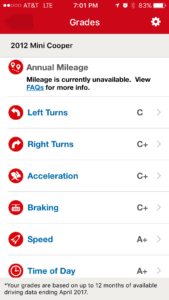I’ve got a thing about calendars. That’s not quite right. I’ve got a thing about remembering knowing when things happened and I’m really bad at remembering stuff. Even important stuff. So I kept a journal for a while and when DayTimers came along I kept one with me all the time for meetings and notes and all the rest. I think I mentioned my DayTimer purge. These days Google Calendar is my tool-of-choice for keeping up with everything. With links to Google Drive. I came across the computer related list below while working on another project.
- 1985 – First computer. Zenith with two 7.5 in floppy drives (no HD)
- 1/6/89 – Jefferson City Computer Club meeting
- 10/31/89 – Bought computer made by CompuAdd?
- 12/6/89 – Rick Williams, MSC, Columbia, MO (1st ref?)
- 4/21/92 – Purchased computer for $3,525.86. 33/386 4 meg; 101/VGA Samsung; 16 SCSI controller
- 11/16/93 – Computer Concepts demo (?)
- 11/16/92 – Switched to AmiPro (word processor/desktop publishing) on office computer
- 6/20/94 – First “notebook” computer; purchased from Bill Bahr (Iowa) for $1700. Made by Toshiba. Base price: $1400; Fax/modem PCMCIA card: $300
- 11/21/94 – MCI Internet service – $49.95 for software; $19.95/mo – 7 hours free; $3.00 per hour after that. 9600 baud/14400
- 12/1/95 – Gateway 2000 computer, $3,100
- 4/24/95 – Comdex, Atlanta, GA
- 5/8/95 – New ISP (Internet Service Provider). Summit Information Services, Holts Summit, MO. $30/mo
- 6/3/96 – Comdex, Las Vegas NV
- 6/10/96 – Ordered IBM ThinkPad
- 8/23/96 – Ordered ACT 3.0 (contact manager)
- 4/20/98 – Comdex, Chicago, IL
- 4/19/99 – Comdex, Las Vegas, NV
- 7/1/99 – Shut down Straylight
- 4/21/04 – Signed up for Gmail
- 5/7/04 – First home wifi
- 4/17/06 – First MacBook
- 1/6/11 – Bought Google and Apple stock. 35 shares Google @ $569; 54 shares of Apple @ $368.03. Our investment guys talked us into selling some. “Too heavy in tech”
- 6/15/11 – Google sent me a Chromebook to evaluate. Sent two for some reason.
- 10/28/11 – Closed PayPal account
- 6/15/12 – MacBook Pro delivered

 : A couple of months ago I mentioned adding a little gizmo from my insurance company (State Farm) that tracks my driving and — depending on my grades — lowers my rates or saves me some money or something. As you can see from the screenshot below, I’m doing fine in a couple of categories and not so good in some others. I do jump off the line and brake too hard but was unaware of my hard turns. I put that on the MINI which handles so beautifully. I do zip around corners. So far all of this has saved me about $11 and change. But I am going to work on my starts/stops/turns.
: A couple of months ago I mentioned adding a little gizmo from my insurance company (State Farm) that tracks my driving and — depending on my grades — lowers my rates or saves me some money or something. As you can see from the screenshot below, I’m doing fine in a couple of categories and not so good in some others. I do jump off the line and brake too hard but was unaware of my hard turns. I put that on the MINI which handles so beautifully. I do zip around corners. So far all of this has saved me about $11 and change. But I am going to work on my starts/stops/turns. I’ve been reading up on this
I’ve been reading up on this